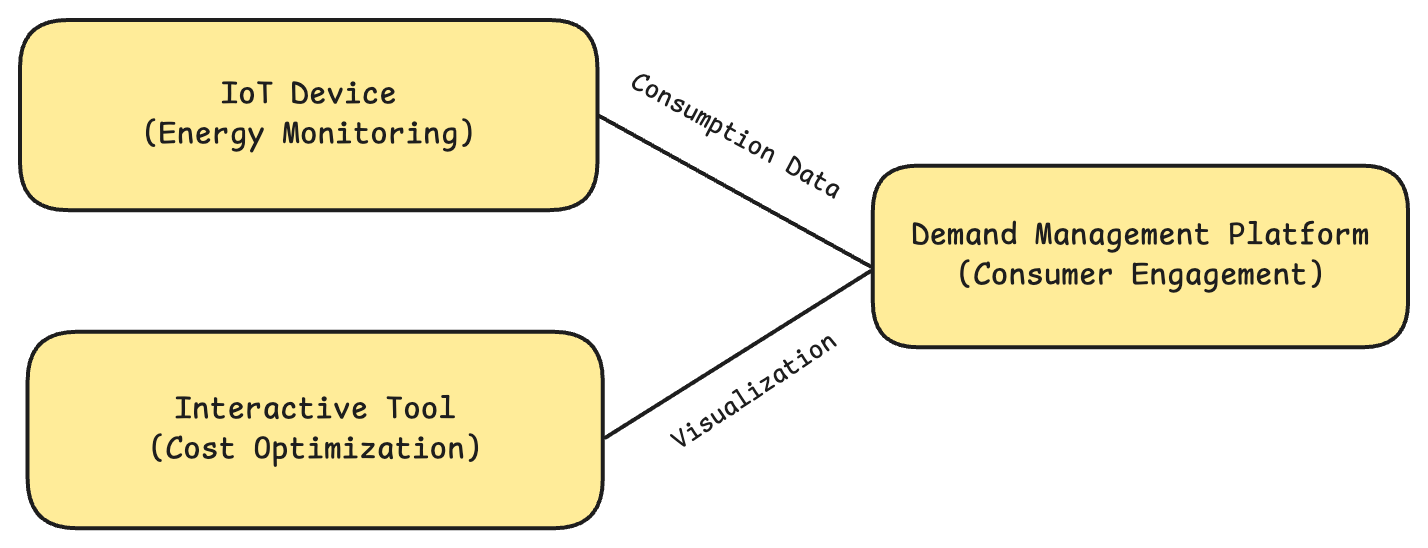From Sensors to Smart Grids
The transition to renewable energy is not only about adding more wind turbines or solar farms. It also requires making demand more flexible so that consumption can adjust to the availability of renewable power. At Shared Electric GmbH, I worked on three interconnected projects that demonstrated demand flexibility in action:
- Building a low-cost IoT device to measure household consumption.
- Developing an interactive tool to show the value of load flexibility.
- Designing a demand-side management platform to connect utilities and consumers. Together, these projects demonstrated how technology can link consumers, utilities, and the grid to create smarter, cleaner energy systems.

Interconnected projects at Shared Electric GmbH, 2016
Measuring Energy
Our first project explored how household energy consumption could be measured reliably and cost-effectively. We built a low-cost IoT device using an Arduino board, clamp-on current sensors, and a GPRS module for mobile connectivity. The device collected consumption data in 15-minute intervals and transmitted it to a cloud server for storage and analysis. This setup demonstrated that real-time usage could be tracked with minimal hardware while still providing utilities with reliable, high-frequency data for decision-making.
Value of Flexibility
The next project explored how much household energy use could actually be shifted. We developed a web-based interactive tool that modeled hourly demand against available generation sources. An optimization algorithm reallocated demand across hours to identify when shifting would yield the most significant cost savings. Implemented in JavaScript, the tool ran directly in the browser and updated results in real time. Through a simple interface, users could test scenarios and immediately see how even small shifts in demand could lower costs for utilities and reduce emissions.
Scaling with People
Finally, we explored how user engagement could make demand shifting work at scale, which led to the design of a demand-side management platform. On the utility side, it provided a dashboard for operators to request adjustments in demand. A backend system then identified which households were best positioned to provide that flexibility. On the consumer side, it offered an app where users could set personal goals and receive timely notifications. At the center was an analytics engine, which processed millions of consumption data points, grouped users by behavior, and tracked their responses. Together, these components demonstrated how utilities and households can coordinate in real-time to balance the grid.
Takeaways
With each project building on the last, we gained a few valuable lessons.
- Data is the foundation: Real-time data from households makes it possible to understand and manage electricity demand.
- Show. Don’t tell: Interactive visuals make the value of shifting demand clear to both households and utilities.
- People are central: Technology provides the signals, but progress depends on engaging people at the right time and in the right way.
We see the future of energy as digital, flexible, and collaborative, with consumers and utilities working together to balance supply and demand.